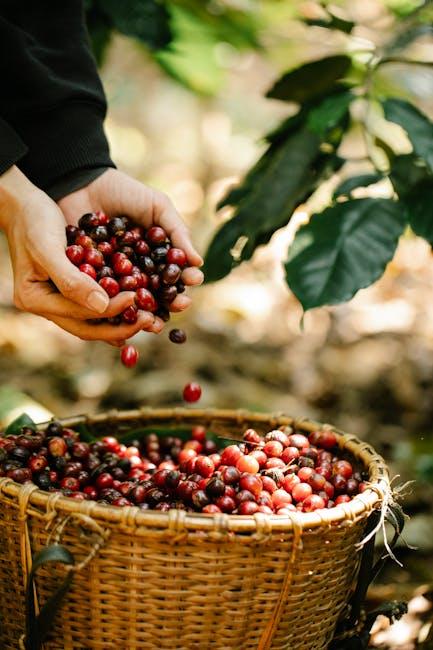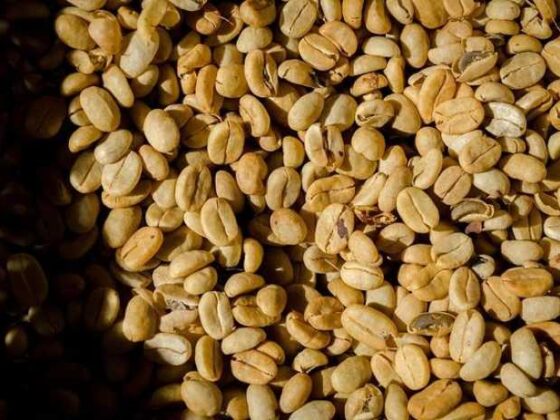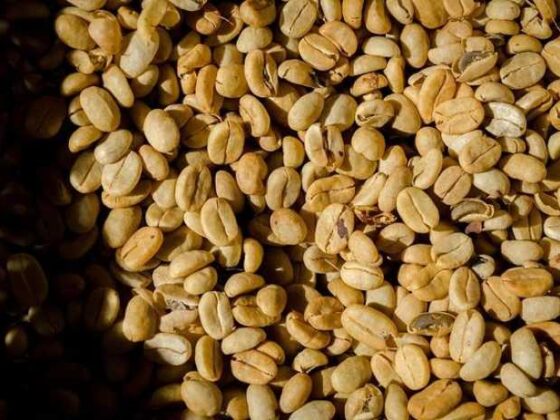Hey there,coffee lovers! ☕️ Have you ever sipped on your favorite brew and wondered about teh magical journey it took to get into your cup? well,buckle up,because we’re diving deep into the world of coffee bean plants! Whether your a seasoned barista,a casual coffee drinker,or someone who’s just curious about what goes on behind the scenes,this article is your one-stop shop for everything you need to know about these fascinating plants. From the different species and how they grow, to tips on how to care for your very own coffee plant at home, we’ve got all the juicy details you need. So, grab a cup of joe, sit back, and let’s get brewing with some bean knowledge!
What Are Coffee Bean Plants and How Do They Grow
Coffee bean plants, scientifically known as *Coffea*, are tropical evergreen shrubs that thrive primarily in warm, humid climates. These plants are not just any ordinary greenery; they produce the seeds that we all know and love as coffee beans. The most popular species cultivated for coffee production are *Coffea arabica* and *Coffea canephora* (commonly referred to as Robusta). When cultivating these plants, several factors come into play, including altitude, temperature, and soil quality. They generally prefer rich, well-draining soil with a pH between 6 and 6.5, making them quite particular about their growing conditions.
When it comes to growth, coffee plants typically start as seeds that can take anywhere from 3 to 5 years to bear fruit—yes, it’s a waiting game! Once mature, they produce stunning white flowers that emit a sweet fragrance, followed by cherries that house the precious beans. The growing cycle consists of several crucial stages: germination, vegetative growth, flowering, and fruiting. Each stage requires specific care to ensure optimal health and quality. Here’s a quick glance at the stages of coffee plant growth:
| Stage | Description |
|---|---|
| Germination | Seeds sprout, developing roots and shoots. |
| Vegetative Growth | leaves develop, and the plant gains height. |
| Flowering | White flowers bloom, attracting pollinators. |
| Fruiting | Cherries form, containing coffee beans. |

choosing the Right Coffee Bean Varieties for Your Garden
When it comes to selecting coffee bean varieties for your garden, it’s essential to consider your climate and the specific characteristics of each type. Two popular varieties that thrive in different conditions are Coffea arabica and Coffea canephora (commonly known as Robusta). Arabica beans are generally preferred for their smooth, sweet flavor profile and lower caffeine content. They flourish in cooler, high-altitude regions, making them ideal for temperate climates. On the other hand, Robusta enjoys warmer, humid environments and is renowned for its strong, earthy taste and higher caffeine kick, which can be appealing for those who prefer a bolder cup of joe.
Additionally, it’s worth exploring other lesser-known varieties to diversify your garden and flavor palate. Consider these options:
- Coffea liberica: Known for its unique floral and fruity notes, this variety is resilient and can withstand diverse conditions.
- Coffea stenophylla: Frequently enough called “the rare coffee,” it has a distinctive taste and is suitable for cultivation in higher altitudes.
- Coffea racemosa: This low-caffeine variety offers a delicately sweet flavor and is well-suited for those looking for a milder option.
Coffee plants can also be influenced by the specific growing methods you choose. Organic farming practices like composting and crop rotation can enhance flavor and sustainability, ensuring you enjoy a fresh brew while keeping your garden healthy!

Essential Tips for Caring for Your Coffee Plants
Caring for your coffee plants can be a rewarding experience, but it requires some know-how to ensure they thrive. Light is crucial; aim for radiant, indirect sunlight as direct rays can scorch their leaves. Water your plants consistently, but avoid waterlogging by letting the top inch of soil dry out between watering. A high-quality potting mix that drains well is key. Here are a few essential tips for maintaining the perfect environment:
- Humidity: Coffee plants love humidity, so consider using a humidifier or placing a tray of water nearby.
- Fertilizing: Feed your plants with a balanced fertilizer every couple of months during the growing season.
- Pest Control: Keep an eye out for pests like spider mites or aphids. Prevention is better,so be vigilant!
The temperature is another important factor; ideally,coffee plants prefer temperatures between 60°F to 70°F (15°C – 24°C). A bit of a seasonal chill is fine, but avoid extreme fluctuations. If your coffee plants start to look a little sad, don’t panic! sometimes symptomatic changes tell you a lot about their needs. Refer to the table below for quick troubleshooting:
| Symptom | Possible Cause | Solution |
|---|---|---|
| Yellow Leaves | Overwatering | Let the soil dry out before watering. |
| Browning Edges | Low Humidity | Increase humidity levels around the plant. |
| Stunted Growth | Lack of Nutrients | Fertilize with a balanced mix. |
Harvesting and Roasting Your Homegrown Coffee Beans
When the time comes to harvest your coffee cherries, conducting a careful inspection of your plants is essential. Ideally, you’ll wont to pick the cherries at peak ripeness—when they turn a vibrant red. This typically occurs about 7 to 9 months after the blooms have fallen. Gather the cherries by hand, or you can use a gentle shaking method to loosen the ripe ones. Be sure to keep your harvest selections separate, as cherries harvested at different ripeness levels can affect flavor profiles. Your goal is to collect only the juicy, fully ripe cherries.
Once you’ve harvested your bounty,it’s time for a crucial step: roasting. You can choose between two popular methods: pan roasting and oven roasting. Both methods allow you to enjoy the aroma of freshly roasted coffee, but they yield different flavor experiences.Here’s a quick comparison:
| Method | Pros | Cons |
|---|---|---|
| Pan Roasting | – quick and accessible – Allows for slight control over roast level |
– Needs constant attention – Can lead to uneven roasting |
| Oven Roasting | – More even roast – Less hands-on |
– Longer cooking time – requires monitoring temperature |
After roasting, let your beans cool down and rest for a day to enhance their flavors before brewing. Whether you prefer a light, medium, or dark roast, the cooling period affects how the beans will taste. Getting to know these nuances will ultimately lead to a satisfying home-brew experience. Enjoy the fruits of your labor with a brew that is as unique as your garden!
Q&A
Everything You need to Know about Coffee Bean Plants!
Q&A
Q: What is a coffee bean plant?
A: Great question! A coffee bean plant is basically a shrub or small tree that produces coffee cherries, which contain the coffee beans we roast and brew. The two most popular species of coffee plants are Arabica and Robusta. Arabica beans are known for their smooth flavor and acidity,while Robusta beans have a stronger,more bitter taste and higher caffeine content.
Q: Can I grow a coffee bean plant at home?
A: Absolutely! If you have a little bit of patience and the right conditions,you can definitely grow a coffee plant indoors or outdoors. They prefer warm, humid climates and thrive in well-draining soil. Just remember, they can take a few years before they start producing those flavorful cherries!
Q: How do you care for a coffee bean plant?
A: Caring for a coffee plant is pretty simple! Make sure it gets plenty of bright, indirect sunlight, keep the soil moist but not soggy, and don’t forget to fertilize it during the growing season.Also, keep an eye out for pests; they love to munch on coffee leaves.
Q: How long does it take for a coffee bean plant to produce beans?
A: Patience is key! Typically, it can take about 3 to 5 years for a coffee plant to start producing cherries. Once it does, you can expect to harvest the beans once a year. But hey, once you get that first batch, it’ll be worth the wait!
Q: What’s the best way to harvest coffee beans?
A: Harvesting coffee beans is a pretty straightforward process. You mainly want to pick the ripe cherries, which are usually bright red. it’s a hand-picking job—so no machines here! After harvesting, you need to process the cherries to extract the beans, which involves drying and sometimes fermenting them.
Q: Are coffee bean plants drought-resistant?
A: Not really! Coffee plants love their water. While they can survive some short periods of drought, they usually do best with consistent moisture. If you’re growing them outside, make sure they get a good drink, especially during hot spells!
Q: How can I tell if my coffee cherries are ripe?
A: Ripe coffee cherries are typically a striking red color—almost like little jewels hanging from the branches. If your cherries are still green or yellow, they aren’t ready yet. A simple taste test can also help; ripe cherries have a sweet flavor, while unripe ones are quite sour.
Q: Do coffee plants have any flowers?
A: Yes, they do! Coffee plants produce beautiful white flowers that are super fragrant, resembling jasmine. These flowers bloom before the cherries start to form, adding a nice touch of beauty to your coffee garden.
Q: What possible pests should I watch out for?
A: Coffee plants can attract some unwanted guests! Look out for aphids, coffee borer beetles, and whiteflies. Keeping your plant healthy is the best way to deter these pests, but if they do show up, there are organic pesticides and insecticidal soaps you can use to get rid of them.
Q: Any tips for beginners wanting to grow coffee beans?
A: For sure! Start with a good quality coffee plant seedling from a nursery.Be patient and attentive; it’s a learning experience! Don’t overwater and ensure good drainage. Lastly, join a coffee-growing community online; they can be a goldmine of advice and support as you embark on your coffee-growing journey!
And there you have it—everything you need to know about coffee bean plants, making your home coffee-growing dreams come true! Happy planting! ☕🌱
The Way Forward
And there you have it, coffee lovers! 🌱☕ Whether you’re dreaming of sprouting your own coffee bean plant or just want to impress your friends with your newfound coffee knowledge, you now have all the essentials at your fingertips. Remember, nurturing a coffee plant isn’t just about growing beans; it’s a journey filled with patience, love, and, let’s be real, a little trial and error.
So, why not dip your toes into the delightful world of coffee cultivation? Experiment with different care techniques, savor the sweet aroma of those green leaves, and, who knows, you might just end up brewing a cup of your very own homegrown coffee!
Keep sipping, keep growing, and may your coffee journeys be ever delicious. Cheers to your plant-powered adventures! 🌿✨ Until next time, stay caffeinated and inspired!











